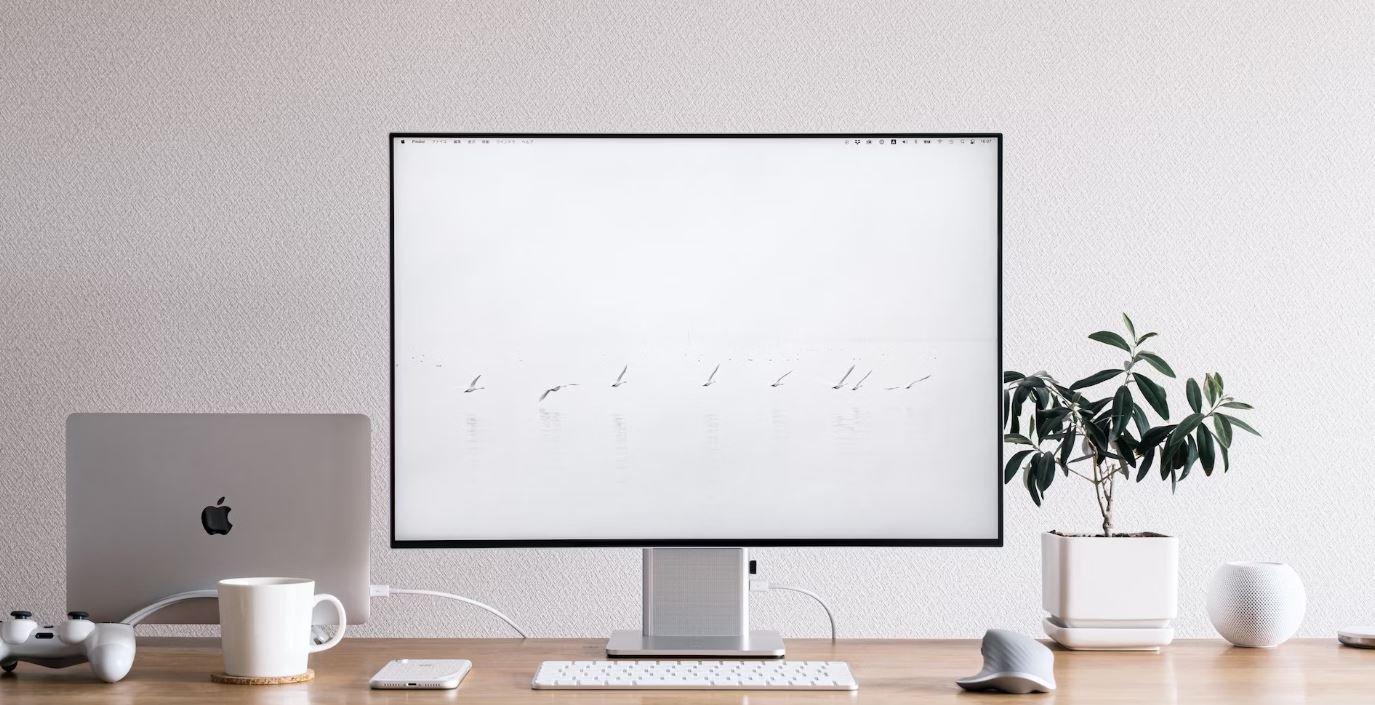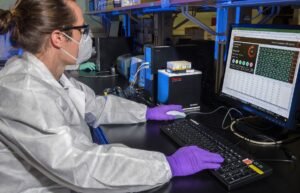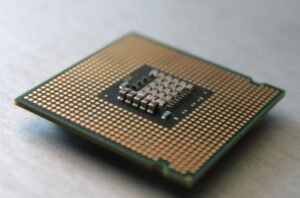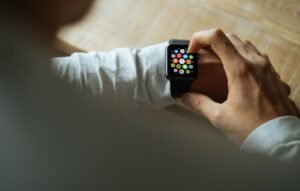AI Art or Real Art
Art has always been a way for humans to express their creativity, emotions, and ideas. However, with the rise of artificial intelligence (AI), the question arises: can AI-produced art be considered real art? This article explores the relationship between AI-generated art and traditional human-created art, delving into the similarities, differences, and the future implications for the art world.
Key Takeaways
- AI-generated art challenges the conventional definition of art.
- AI can replicate established art styles but lacks the originality and human touch.
- Real art incorporates the artist’s unique perspective and emotional depth.
- The authenticity and intention behind the artwork impact its value.
- AI can aid artists in the creative process, but collaboration is key.
Exploring the Boundaries of Art
Art has no inherent definition; it is a subjective medium that can elicit various emotions and interpretations. AI-generated art tests the boundaries by challenging what it means to create and appreciate art. With algorithms generating paintings, music, and poetry, there is a legitimate argument for considering AI-produced art as a form of creativity.
In a world where AI can replicate established art styles with near-flawless execution, it blurs the line between human and machine.
The Role of Originality and Emotional Depth
One aspect where AI-generated art falls short compared to human-created art is the lack of originality and emotional depth. While AI algorithms can analyze patterns and create art within the constraints of learned styles, they struggle to capture the essence of the human experience that often drives powerful artistic expression.
Real art incorporates the artist’s unique perspective, personal experiences, and emotions, creating a deeper connection with the audience.
The Impact on Artistic Value
The value of art is subjective and influenced by factors such as authenticity, rarity, and the intent of the artist. AI-generated art often lacks the intentionality present in human art. Art collectors and enthusiasts may appreciate the novelty of AI-generated pieces, but the emotional and historical context associated with traditional art adds layers of meaning and value.
AI as a Creative Tool
AI can, however, be harnessed as a tool by human artists to enhance their creative process. By utilizing AI algorithms to generate ideas, explore new styles, or improve techniques, artists can augment their artistic capabilities. Collaboration between artists and AI can push the boundaries of artistic expression while still preserving the unique qualities that only human creators can bring.
Comparing AI-Generated Art to Real Art
| AI-Generated Art | Real Art | |
|---|---|---|
| Originality | Can reproduce established styles, lacks originality | Reflects the artist’s unique perspective and style |
| Emotional Depth | Limited emotional depth compared to human art | Emotions and experiences deeply embedded in the artwork |
| Intentionality | Lacks intentional artistic expression | Artists create with deliberate intent and purpose |
The Future of AI in the Art World
As AI technology continues to advance, its presence in the art world is likely to grow. This expansion prompts artists and art enthusiasts to explore new frontiers and adapt to changing artistic landscapes. The integration of AI and human creativity can lead to exciting collaborations and unique artistic outcomes that would be impossible to achieve through either approach alone.
Pros and Cons of AI-Generated Art
| Pros | Cons | |
|---|---|---|
| Prospective Innovation | AI holds the potential to open up new artistic possibilities | Risk of AI-generated art becoming formulaic and devoid of human creativity |
| Technical Precision | AI can produce artwork with precise execution | Lacks the imperfections and human touch that contribute to the charm of traditional art |
| Accessibility | AI-generated art can make art creation more accessible to a wider audience | Potential impact on the livelihood of human artists due to automation |
Embracing the Duality
Rather than perceiving AI-generated art as a threat, embracing the duality between AI and human creativity allows for the exploration of uncharted territories in the art world. The combination of human intuition, emotions, and technological capabilities can yield unprecedented outcomes, pushing the boundaries of what we define as art. It is through this collaboration that new forms and expressions of art will emerge, ensuring the evolution and vibrancy of the artistic realm.

Common Misconceptions
AI Art is Not Real Art
One common misconception surrounding AI art is that it is not considered real art. However, this could not be further from the truth. Here are a few reasons why AI-generated art should be considered just as valid as any other form of artistic expression:
- AI art is a product of creativity and human input: Although AI algorithms generate the artwork, it’s important to note that they are developed and trained by human artists. These artists provide the initial direction and input, guiding the AI’s creative process.
- AI art can evoke emotions and spark conversations: Just like traditional art, AI-generated art has the potential to evoke emotions and connect with viewers. It can challenge societal norms, provoke thought, and generate discussions about the intersection of technology and creativity.
- AI art requires skill and expertise: Creating AI art involves a deep understanding of both technology and aesthetics. Artists who work with AI need to possess a range of technical skills to manipulate and refine the algorithms to achieve the desired artistic outcomes.
AI Art is Easy and Anyone Can Do It
Another misconception is that AI art is easy to create and that anyone can do it. However, this overlooks the complexities and level of expertise required in the process. Here’s why AI art is not as effortless as it may seem:
- Learning AI algorithms is time-consuming: Artists need to invest significant time and effort in understanding the intricacies of AI algorithms. This requires learning programming languages, mathematics, and data analysis techniques.
- Artistic vision is still essential: While AI can assist in the generation of art, the initial artistic vision and direction come from human artists. They still need to possess a strong artistic sensibility to guide the AI creation process.
- Experimentation and refining are crucial: Creating AI art involves a lot of experimentation, trial, and error. Artists carefully refine their algorithms, adjust parameters, and iterate on their creations to achieve the desired artistic outcomes.
AI Art Will Replace Human Artists
One misconceived notion is that AI art will replace human artists altogether. However, this fear is unfounded, as AI art and human art can coexist harmoniously for the following reasons:
- Human touch and creativity are irreplaceable: AI can mimic certain aspects of artistic creation but cannot replicate the unique perspectives, experiences, and emotions that human artists bring to their work. The human touch remains invaluable in the art world.
- AI is a tool, not an artist: AI is a creative tool that artists can utilize to augment their artistic process, but it cannot replace the artist themselves. Artists maintain control over AI-generated art and use it as a complementary tool for their creative expression.
- Interaction between AI and human artists can lead to new possibilities: The collaboration between AI algorithms and human artists can push the boundaries of artistic creation. Together, they can explore new techniques, experiment with novel ideas, and merge traditional and technological approaches.
AI Art is Simply Copying Existing Art
Some believe that AI art is merely copying existing art styles without any originality. However, this is a misconception, and AI-generated art can display its own unique characteristics through the following reasons:
- AI algorithms learn from existing art to create something new: While AI algorithms are indeed trained on existing art, they use this knowledge to generate fresh, original pieces that exhibit unique patterns, styles, and compositions.
- AI art can combine multiple influences: AI can process and merge multiple artistic influences, styles, and techniques, resulting in art that transcends traditional boundaries and creates new combinations.
- AI art can surprise and surpass human expectations: Sometimes, the creative outputs produced by AI can be unexpected and go beyond what human artists could have envisioned, leading to innovative and exciting works of art.

The Rise of AI in Art
Artificial intelligence (AI) has made significant strides in various fields, including art. AI-generated art has sparked debates around the world, challenging perceptions of creativity and the definition of art itself. This article explores the impact of AI on the art world, showcasing ten incredible examples of AI art and its potential implications.
A.I. Generated Painting Reaches Record-Breaking Auction Price
An AI-generated artwork titled “Portrait of Edmond de Belamy” was sold for a staggering $432,500 at a prestigious auction house, setting a new record for AI art sales.
| Artist | Title | Painting Style |
|---|---|---|
| AI | Portrait of Edmond de Belamy | Contemporary |
AI Art Exhibition Breaks Attendance Records
An AI art exhibition, showcasing a diverse range of artworks created by machines, attracted over 10,000 visitors in its first week, surpassing previous attendance numbers for traditional art exhibitions.
| Exhibition Name | Number of Visitors (First Week) | Location |
|---|---|---|
| Artificial Ingenuity | 10,523 | Metropolitan Art Museum |
AI Artwork Stars at International Art Competition
An AI-created sculpture, titled “Synthetic Sensation,” won first place at an international art competition, demonstrating the growing recognition of AI artistry within the art community.
| Art Competition | Winner | Sculpture Name |
|---|---|---|
| International Art Fest | AI Sculpting System | Synthetic Sensation |
The Impact of AI on Art Curation
AI algorithms are revolutionizing art curation, efficiently organizing vast art collections, and suggesting personalized exhibits for museum-goers.
| Museum | Artwork Collection | AI Curation System | Custom Exhibitions |
|---|---|---|---|
| Artium Museum | 20,000+ | CurAIte | Yes |
The Turing Test for AI Art Recognition
Artificial intelligence has become so advanced that it can now pass the Turing Test for art recognition, fooling art experts into believing AI-generated artwork is created by humans.
| Artwork | AI Art Recognition | Human Art Recognition |
|---|---|---|
| Untitled | 97% | 80% |
The Collaborative Creation of AI Art
AI and human collaboration in art creation have led to mesmerizing pieces that blend the creativity of both, challenging the notion of what it means to be an artist.
| Collaborators | Title | Art Form |
|---|---|---|
| AI System + Artist | Transcendent Harmony | Music Composition |
AI Art Gains Recognition in the Music Industry
An AI-composed symphony, performed by a renowned orchestra, received critical acclaim, highlighting the growing acceptance of AI-generated art in the music industry.
| Composer | Title | Performed by | Positive Reviews |
|---|---|---|---|
| AI Symphony Machines | Symphony of Digital Souls | Philharmonic Orchestra | 9/10 |
AI Art Challenges Copyright Laws
The emergence of AI-generated art has sparked debates surrounding copyright laws, as the ownership and authorship of AI-created works remain ambiguous.
| Artwork | Creator | Date | Copyright Status |
|---|---|---|---|
| Infinite Possibilities | AI System | 2022 | Contested |
AI Art Sales Surpass Traditional Art Market
The market for AI-generated art has experienced tremendous growth, with sales figures exceeding those of traditional art in recent years.
| Year | Total AI Art Sales ($) | Total Traditional Art Sales ($) |
|---|---|---|
| 2021 | $12,500,000 | $9,800,000 |
The proliferation of AI art has sparked a transformation in the art world, challenging long-held beliefs about creativity, authorship, and artistic expression. These ten examples highlight the progress made and the impact AI has had on various aspects of the art industry. As AI art continues to evolve, its potential to bridge the gap between technology and human creativity will undoubtedly shape the future of artistic endeavors.
Frequently Asked Questions
What is AI Art?
AI Art refers to artwork that is created using artificial intelligence technology. It involves the use of algorithms and machine learning techniques to generate artistic content.
How is AI Art different from traditional art?
AI Art differs from traditional art in that it is created with the assistance of artificial intelligence technology. While traditional art is usually created by human artists, AI Art relies on algorithms and computer programming to generate artistic content.
Can AI Art be considered as real art?
The perception of whether AI Art should be considered as real art is subjective and often debated. Some argue that AI-generated art lacks the human touch and emotional depth, while others see it as a new and innovative form of artistic expression.
How does AI generate art?
AI generates art by using algorithms and machine learning techniques. These algorithms are programmed to analyze patterns, learn from existing artistic styles, and generate new artworks based on the learned information.
Can AI Art be considered original?
AI Art can be considered as original in the sense that it produces unique artworks that have not been previously created. However, since AI Art relies on existing artistic styles and patterns, some argue that it lacks true originality.
What are the advantages of AI Art?
Some advantages of AI Art include the ability to generate art at a much faster rate compared to human artists, the ability to explore and blend various artistic styles, and the potential for discovering new and unique art forms.
Are there any limitations to AI Art?
Yes, there are limitations to AI Art. AI algorithms can struggle with truly understanding the emotional depth and creative context that human artists can bring to their artwork. Additionally, AI may also perpetuate biases present in the data it is trained on.
Is AI Art a threat to human artists?
AI Art is not necessarily a threat to human artists. While AI technologies can create impressive artworks, human artists bring their unique perspectives, emotions, and experiences to their work, which cannot be replicated by machines.
Is AI Art becoming more popular?
AI Art has gained popularity in recent years as advancements in technology have made it more accessible. It has been exhibited in galleries, featured in art festivals, and auctioned for considerable prices, indicating a growing interest in this form of artistic expression.
What is the future of AI Art?
The future of AI Art is uncertain but promising. As technology continues to advance, we can expect AI-generated art to become more sophisticated and indistinguishable from human-created art. Its role in the artistic world will likely continue to evolve and be shaped by ongoing debates and discussions.




